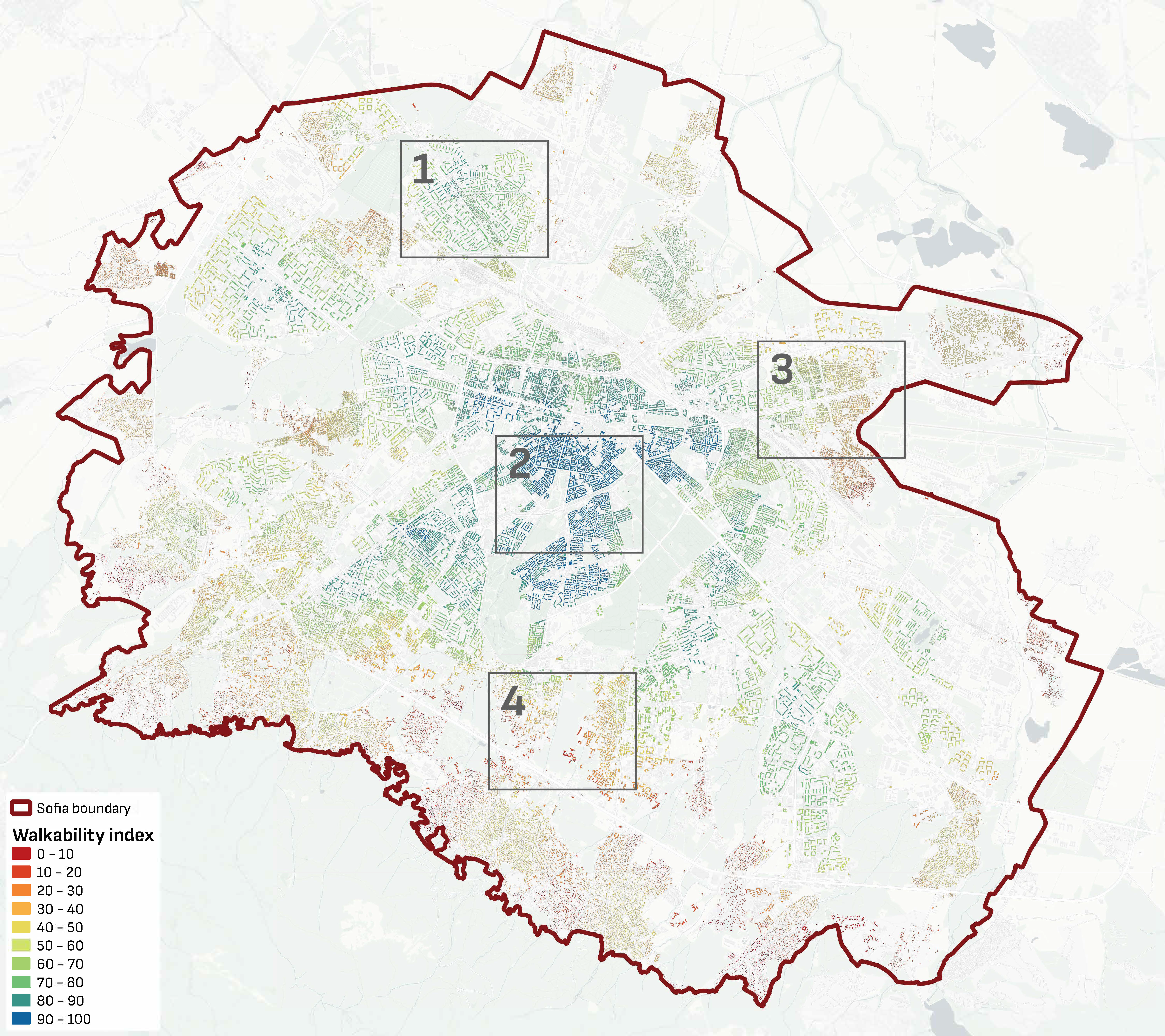
Walkable Cities
The 15-minute city concept and the essence of a pedestrian-friendly urban environment are influenced by the accessibility and diversity of specific Points of Interest (POIs) that shape daily city life. Assessing pedestrian-friendliness, considering factors like safety, wind comfort, and aesthetics, is important to understand urban accessibility challenges and take appropriate actions to achieve a better quality of life. A comprehensive and objective assessment of urban accessibility and diversity provides the following benefits:
- Deliver valuable insights for city stakeholders, including citizens, on neighborhood accessibility.
- Support city authorities’ decision-making to meaningfully change the planning and building of neighborhoods for a better living environment and a more sustainable future.
- Enhance the intelligence of the urban digital twins by semantically enriching the 3D city models with insights from the accessibility analysis, thus enabling a better understanding of the urban context.
Of course, the urban functions that each person finds necessary, provided by different POIs, often vary and depend on individual subjective needs and habits and factors such as age, gender, social status, financial possibilities, and more. People living in the same building often have fundamentally different daily routines and needs, let alone people living in other countries or continents. Cultural specificities can shape the cities, from minor aspects, such as the size and distribution of housing, to the shaping of public spaces and even the structure of neighborhoods.
The 15-minute city concept is structured around four key pillars as follows: proximity, density, diversity and digitalization. This study focuses on the first three pillars by assessing walkability through access to essential services and green spaces, while the digitalization pillar will be explored in future research. Thus, walkability is defined as the degree to which urban areas provide walking opportunities, ensuring proximity, diversity and density of essential services and functions that support daily life within a 15-minute walking distance. It aims to assess the urban walkability at the residential building level based on three indices as follows:
- Accessibility Index (AI): Measures how accessible different POIs are within a 15-minute walking distance on the pedestrian network. The weights assigned to each POI group reflect their importance or relevance to the accessibility calculation.
- Shannon Diversity Index (SHDI): Quantifies the diversity of POIs within the accessible area, considering both the abundance and evenness of the POIs across the groups.
- Simpson Diversity Index (SIDI): This index measures the probability that two randomly selected POIs from the accessible area belong to the same group, thus emphasizing the dominance of certain groups of POIs.
These indices form a unique framework that not only evaluates walkability but also enables a more meaningful understanding of urban environments. Unlike existing walkability metrics, the proposed AI provides insights into POI proximity with differentiated weights, reflecting their impact on urban life and residents’ well-being. This approach allows urban planners to identify and prioritize high-importance areas within a neighborhood, facilitating targeted infrastructure improvements. Additionally, the SHDI and SIDI offer a new perspective on urban diversity, allowing planners to balance POI richness and evenness. By leveraging this framework, urban policymakers can create more actionable, evidence-based strategies to promote equitable access to services and design more self-sufficient, resilient neighborhoods.

